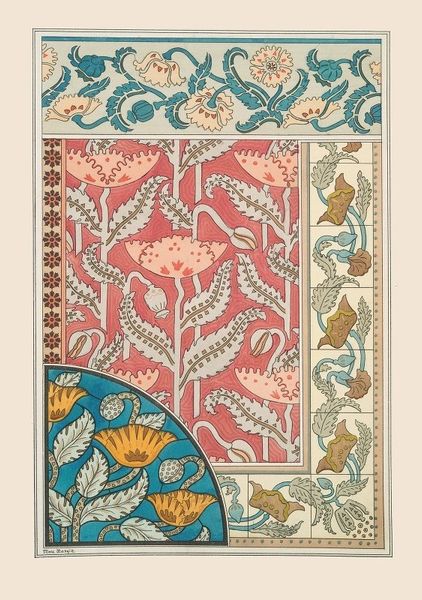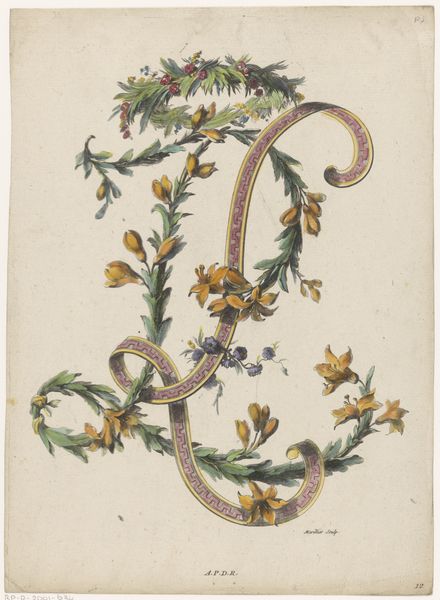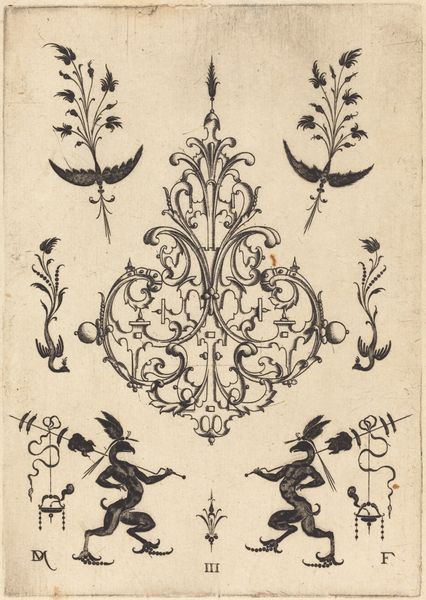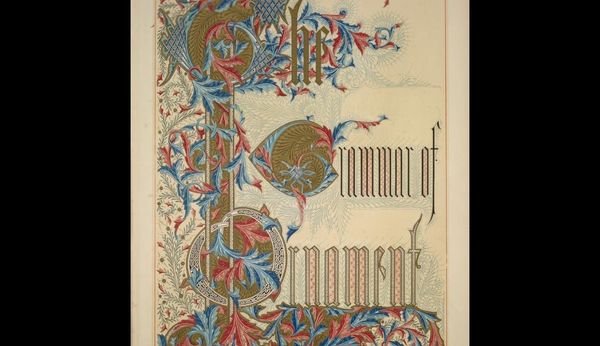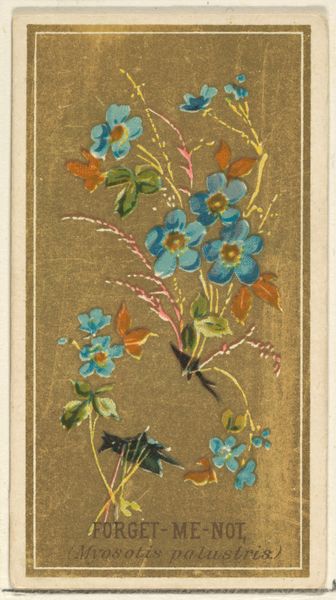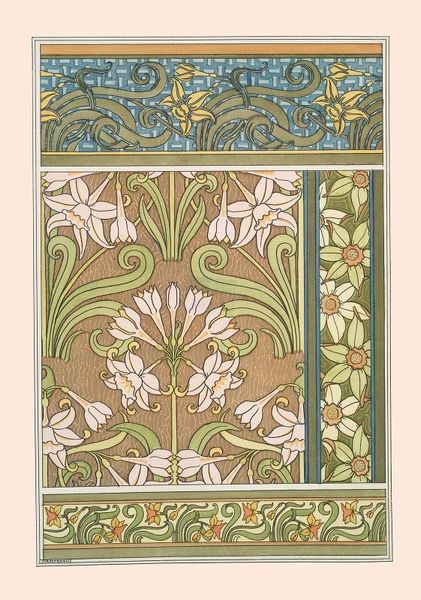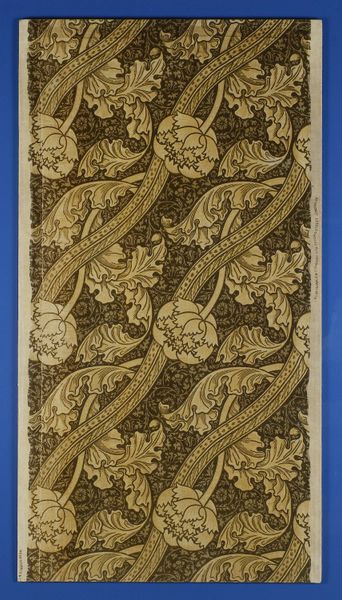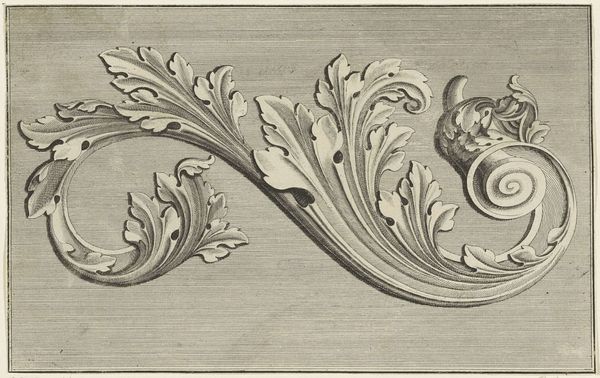
Dimensions: height 103 mm, width 363 mm
Copyright: Rijks Museum: Open Domain
Editor: This watercolor artwork is titled "Vlechtwerk met bloemen" or "Plaited Work with Flowers," created by Lambertus Hardenberg, sometime between 1754 and 1819. I'm struck by the intricate pattern and the contrast between the delicate flowers and the bolder, almost metallic, flourishes. How would you interpret the composition of this work? Curator: Let us focus on the sinuous lines that dominate the composition. Note how they divide the pictorial space. Do you perceive how each floral element nests comfortably within the woven framework? This reinforces a calculated structure rather than pure representation. Editor: Yes, I see how the curves of the 'vlechtwerk', the plaiting, act as both container and framework. It seems very intentional. It's not just decorative; it's creating a formal order. What about the medium? Curator: The watercolor technique deserves careful consideration. The diluted pigments create gradations, emphasizing line quality and tonal transitions. Observe how the artist used washes and thin lines to simulate highlights, almost tricking the eye into believing in three dimensions. Consider the implications of ' Rococo '. Does this pattern invite closer scrutiny? Editor: It certainly does, drawing attention to both the grand, sweeping curves and the delicate floral details within. The colour palette helps, too. But if it isn’t directly representative of something, does it point to something else through its design choices? Curator: Semiotically, consider what floral motifs conveyed in that epoch. Flowers, due to their inherent natural temporality, serve as potent symbols related to fragility. How might this juxtapose with the seeming stability implied by weaving? Editor: Interesting, a formal approach brings out subtleties of colour, line, and construction that create such an engaging work! Curator: Indeed. Dissecting these constituent components has deepened my own perception of the work's symbolic tension.
Comments
No comments
Be the first to comment and join the conversation on the ultimate creative platform.

